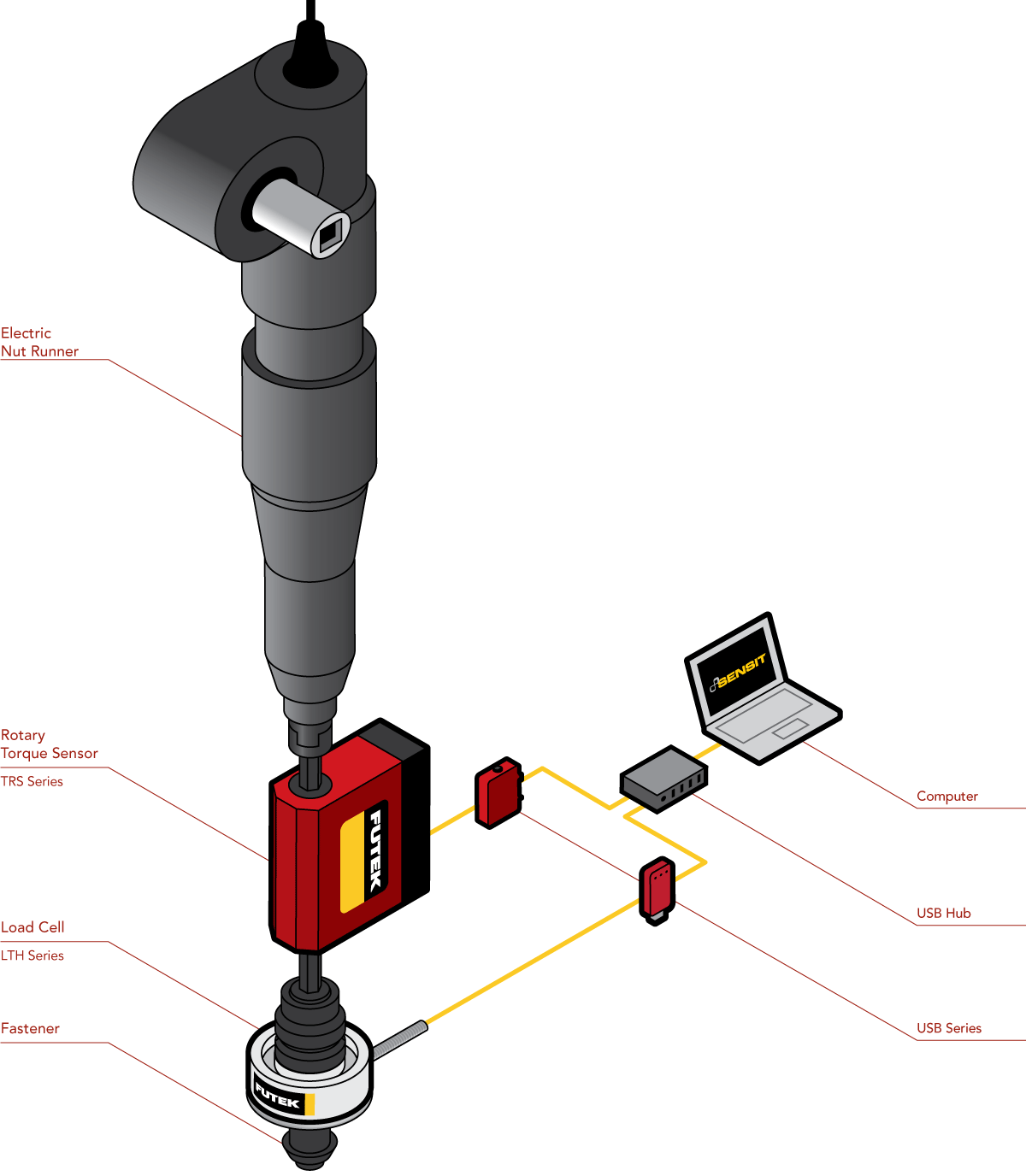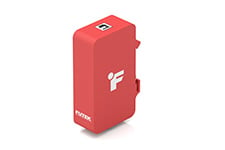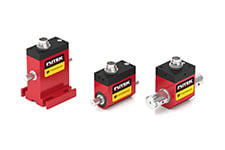Using both a rotary torque sensor and load cell, we can establish a relationship between the bolt tension and the torque that is applied.
How it Works
Additionally, a rotary torque sensor is used to measure the torque that is also applied by the electric nut runner within the assembly.
To monitor each sensors measurements, operators can pair the Donut/Thru Hole Load Cell and Rotary Torque Sensor with FUTEK's USB Solutions.
Utilizing FUTEK's SENSIT™ Test and Measurement Software alongside the USB520 External USB Kit (mV/V, amplified and encoder input) will allow operators the ability to capture, live graph and interpret the data.
A standard Donut/Thru Hole Load Cell is used on a bolt and nut assembly, similar to our bolt-fastening application scenario.
The USB520 is the ideal data exchange solution for systems that require translation of rotary torque encoder readings, such as angle and speed. Its compact and robust design also makes the USB520 fitting for this type of industrial application.
Thus, the end user can measure and monitor the thrust using the LTH series. In parallel, the rotary torque sensor will measure the torque, angle, and speed.
Products in Use
A LTH Series Donut/Thru Hole Load Cell and a Rotary Torque Sensor paired with FUTEK's USB520 and SENSIT™ Test and Measurement Software.
Contact Us
Please Contact Us with questions.
Using both a rotary torque sensor and load cell, we can establish a relationship between the bolt tension and the torque that is applied.


